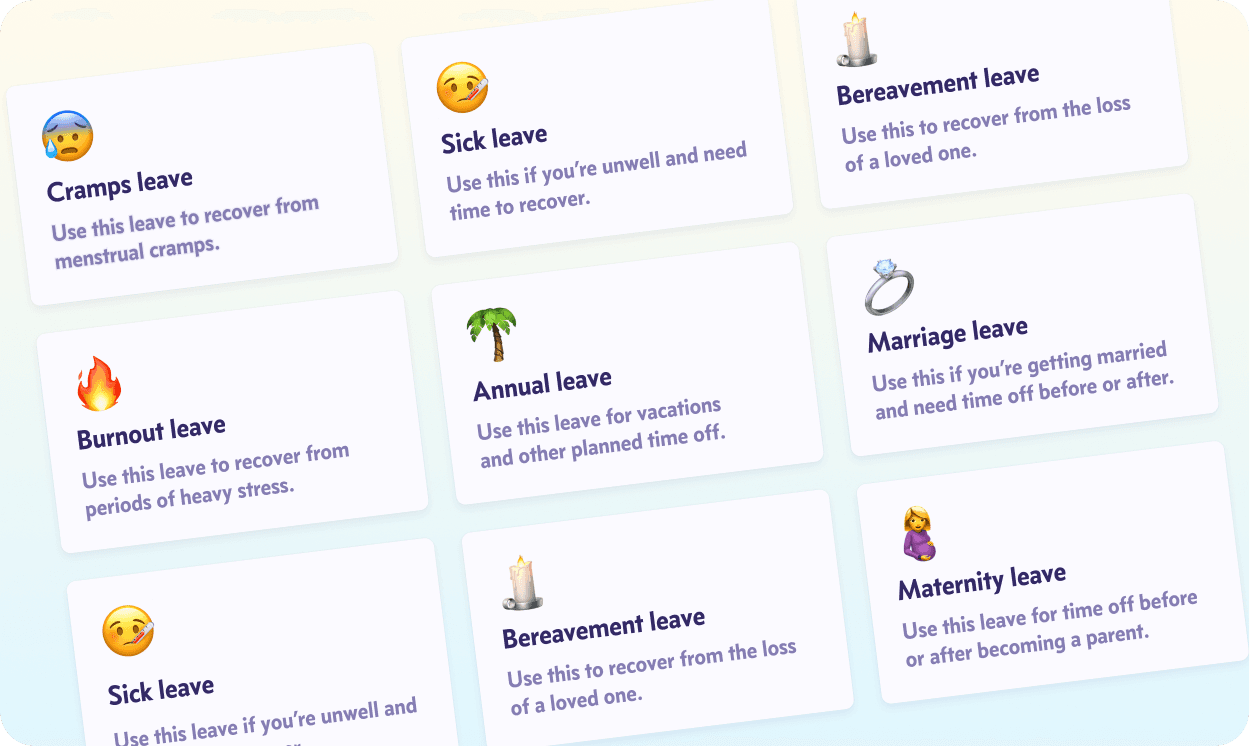Creating effective sabbatical policies: A comprehensive guide for employers
Nov 19, 2021

Sabbaticals have become the shift we anticipate when we think about perks a human-centric organisation should have. But why have sabbaticals gained so much momentum over the years? For one, it's because it's quite challenging to log out of work entirely. We're sneakily checking our emails or catching up to work banter through Slack, even on off days.
Once upon a time, a career sabbatical was for when work felt monotonous, needed more experience, or required a little unsticking. Today though, a sabbatical from work is an opportunity to chase unrealised dreams or prioritise mental health. The shift hasn't gone unnoticed and organisations are warming up to the idea of offering sabbaticals.
If yours is one such organisation, here's a quick guide on:
Sabbatical leave policy: Things to consider
Eligibility
Eligibility helps you decide who gets to take a sabbatical from work and when. This is necessary because you might not want two crucial members on a career sabbatical at the same time. You also want to avoid confusion amongst new recruits.
All your team members must get the break they deserve. However, you may want to decide what kind of sabbatical break each individual receives. This could be based on how long they've been working in your organisation or if they've already taken a sabbatical.
Length of sabbatical
"How long is a sabbatical leave" is a frequently asked question. Some organisations offer six months of unpaid or semi-paid sabbatical leave, while others are generous enough to give a year off. Yet others encourage team members to present their case so they can decide accordingly!
When you're deciding this, think about how long your organisation can work without their presence. Based on that, we'd highly recommend you set a maximum length for the sabbaticals you offer.
Requirement for notice
How well in advance would you need to know if a teammate needs to take a sabbatical? Generally, team leads prefer to know two months in advance as it helps with reprioritising organisation goals. It gives you time for a smooth delegation of duties between other team members, hiring (if necessary), and conducting any required training.
An easier way to do this is to use leave management software that records sabbatical applications for you. With Pause, for example, you can set up your sabbatical leave policy complete with guidelines, maximum length and eligibility. When someone wants to take a sabbatical from work, all they need to do is apply for it through the system — you'll get a request and, if you approve it, team members will be informed accordingly!
Purpose of the sabbatical
Sabbaticals are a win-win situation for the team and the team member who's taking it. But it's always good practice to clarify what qualifies as a reason for a sabbatical. For instance, few organisations allow their colleagues to take a career sabbatical for any reason. On the other hand, it is not uncommon to see sabbaticals being approved only for specific purposes such as volunteering or studying abroad. Whichever way you choose, having the information down on paper is the surest way to ensure a smooth process.
Paid vs unpaid sabbatical
Depending on the company's budget, you might decide to fully fund your colleague's sabbatical or only a part of it. You might also decide on the duration for which you want to finance the sabbatical. Either way, your company's sabbatical policy must have details on how the organisation handles pay and benefits during sabbatical leave.
Post-sabbatical employment return
This section of the policy explains what happens when your team member returns from their sabbatical. Here's where you get to decide if your colleague will return to their previous role or be fulfilling other relevant positions in the organisation.
Sabbatical leave policy: The bottom line
We'd recommend thinking of the above tips as a good starting point for your company's sabbatical policy. However, that might not be all. You might want to consider the frequency of sabbaticals your team members can take, set working limits, and develop a way to communicate changes to the sabbatical policy. The point is this: the clearer your sabbatical policy, the better. And the easier the application process, the happier everyone is!



